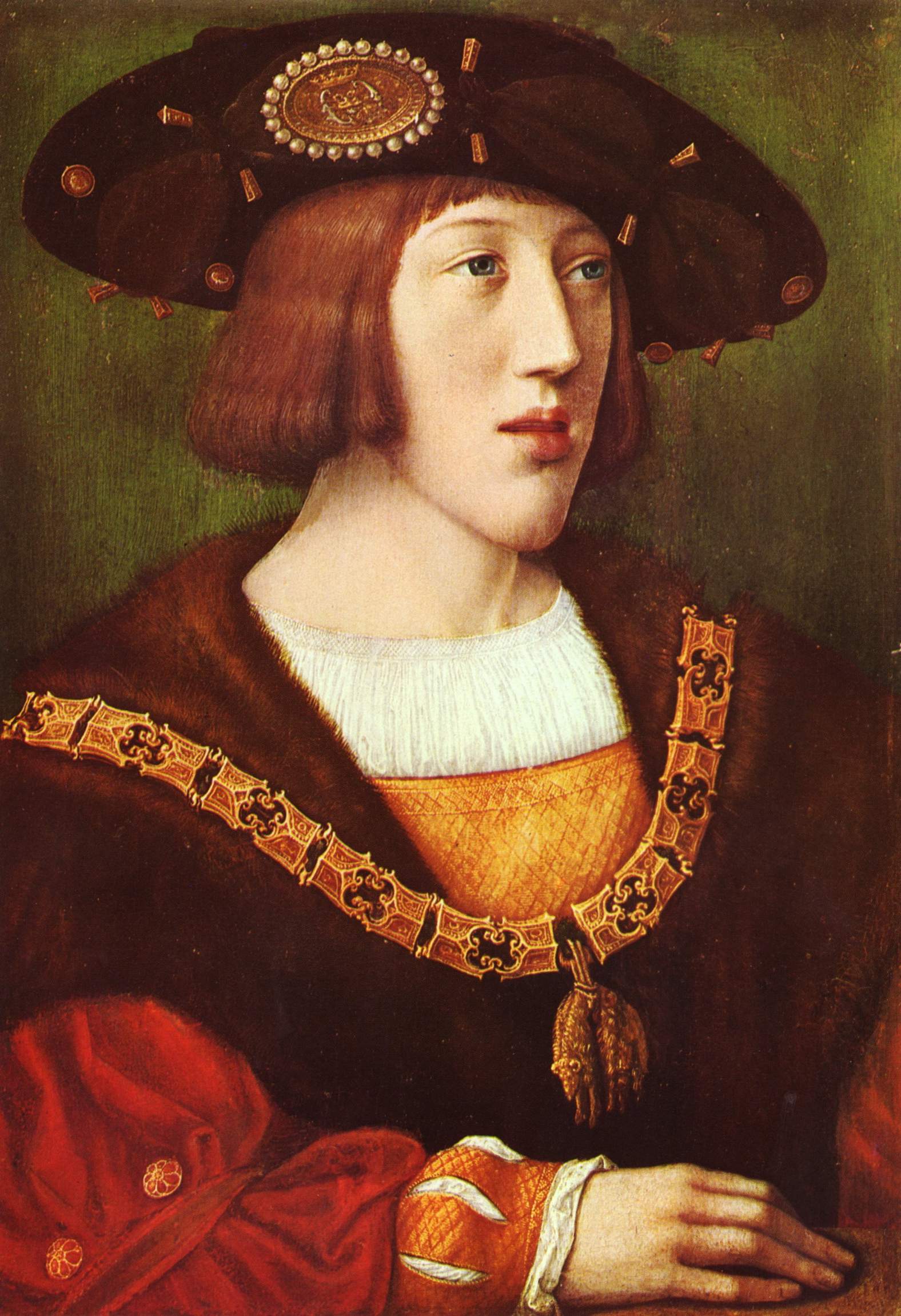2020-21 season's lectures
Unless otherwise stated, all lectures will be delivered by Zoom and will start at 6pm (Spanish time).

Juana the Mad: heretic or lunatic? Mad for love or genetically mad? Or victim of political machinations of husband, father and son?
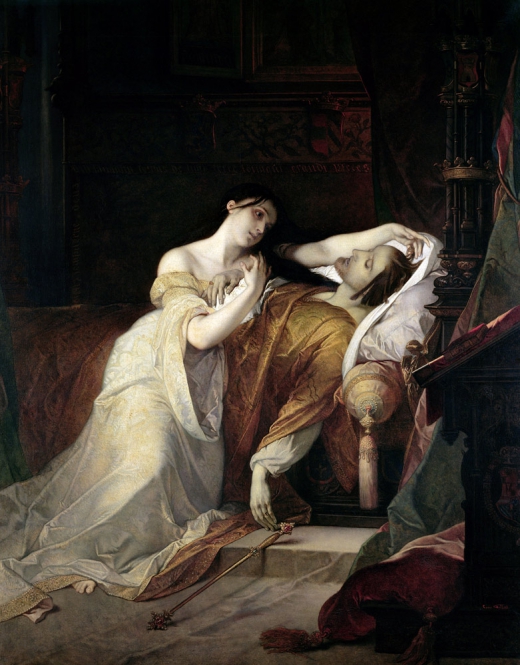
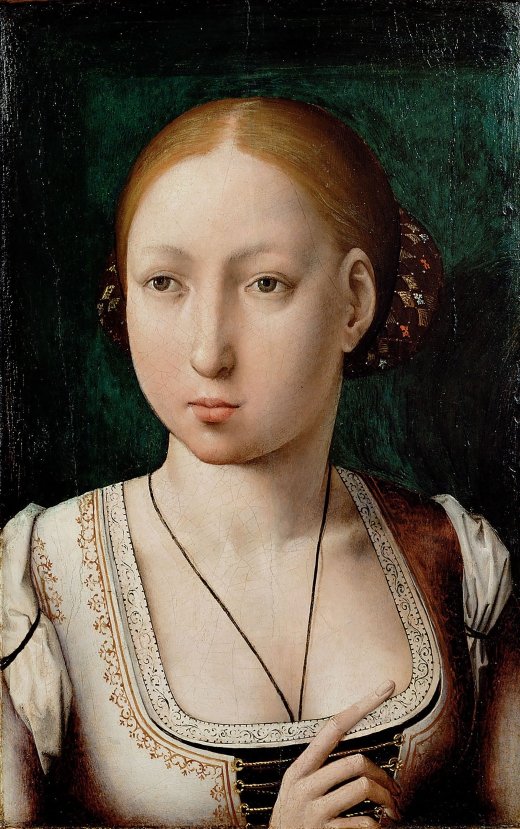 The Queen Juana of Castile, the third daughter of the Catholic Kings Isabel and Ferdinand, got the nickname Juana the Mad, Juana la Loca. She was regularly locked up by husband, father and son till finally she was imprisoned in Tordesillas for 46 years.
The Queen Juana of Castile, the third daughter of the Catholic Kings Isabel and Ferdinand, got the nickname Juana the Mad, Juana la Loca. She was regularly locked up by husband, father and son till finally she was imprisoned in Tordesillas for 46 years.
But was she mad? The Romantic image of a queen mad for love of her young husband who passed away, trudging through Spain with his coffin, which was popular in the 19th c, is questioned by modern historians. Was she schizophrenic? Or was she just inconvenient for the men around her who were hungry for power: her father Ferdinand King of Aragon, her husband Philip the Handsome, the Archduke of Austria and her son Charles V, the Holy Roman Emperor?
About Helen Sijsling
Helen Sijsling has been living in Spain for 20 years. After having read English Literature at Leyden University and Oxford University she worked as a teacher of English. After having attained an MA in Educational Management at the University of Amsterdam she worked in The Netherlands and the Caribbean as educational consultant for secondary schools, training managers in change management and teachers in new and effective ways to teach.
Now there is time to thoroughly enjoy other interests expressed in an earlier degree in History of Art (Leyden University). Now she regularly gives lectures on History, Literature and Art subjects for The Arts Societies and other societies on the coast.

In this talk entited THREE SPANISH PAINTERS, Manni will take us on an in-depth discovery based around three key paintings and the lives of their creators.
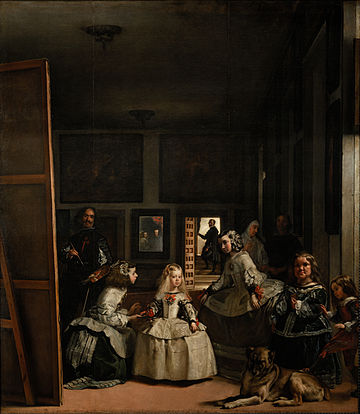

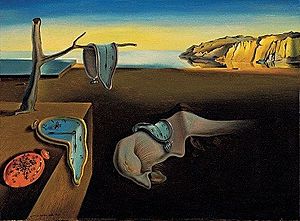
About Manni Coe
Manni Coe studied Spanish Literature at Edinburgh University before settling in Andalucia 20 years ago. He has been a private guide for over 25 years. As he was grappling with the complications of Spanish history, he discovered Art as a vehicle through to deeper understanding. He now uses Art to teach Spanish History & Culture. He lives on an olive farm in the middle of Andalucia with his partner and his 4 dogs, chickens, ducks, cats and 160 goats.




Raphael is often referred to as one of the three giants of the High Renaissance in Italy alongside Michelangelo and Leonardo da Vinci yet his career was short-lived since he died tragically young, aged just 37. Nevertheless in this relatively short space of time he progressed from a series of modest initial commissions in and around his home town of Urbino to the covetous position of one of the leading artists at the court of Pope Julius II.
The Pope was without doubt the most important patron of the arts in Italy and commissioned some of the most sublime and influential works of the early 16th century from this young and gifted painter.
We explore how Raphael achieved this extraordinary rise in status, tracing the development of early works under the influence of Perugino and Pinturicchio to encounters with Michelangelo and Leonardo in Florence, and finally an examination of the later masterpieces of painting and drawing created in Rome
About Siân Walters
From Siân's website :
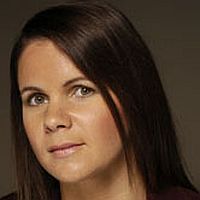 Siân Walters is an art historian and lectures for the National Gallery, NADFAS (The Arts Society), The Wallace Collection, Friends of the Royal Academy, The London Art History Society, The Art Fund and many other art societies and colleges in the UK and Europe. She was also a lecturer at Surrey University for many years. Having graduated from Cambridge University, Siân spent four years in Italy and France where she worked for the Peggy Guggenheim Museum and the eminent scholar H.C. Robbins Landon. As well as running Art History in Focus, she spends much of the year lecturing abroad, particularly in Italy and Spain, and is well known for her enthusiastic, structured yet informal approach. Siân is delighted to have been nominated by an independent travel company in 2008 and 2009 for the Daily Telegraph’s Best Guide Award. In 2016 she was named a Highly Commended finalist in the Wanderlust World’s Best Guide Awards.
Siân Walters is an art historian and lectures for the National Gallery, NADFAS (The Arts Society), The Wallace Collection, Friends of the Royal Academy, The London Art History Society, The Art Fund and many other art societies and colleges in the UK and Europe. She was also a lecturer at Surrey University for many years. Having graduated from Cambridge University, Siân spent four years in Italy and France where she worked for the Peggy Guggenheim Museum and the eminent scholar H.C. Robbins Landon. As well as running Art History in Focus, she spends much of the year lecturing abroad, particularly in Italy and Spain, and is well known for her enthusiastic, structured yet informal approach. Siân is delighted to have been nominated by an independent travel company in 2008 and 2009 for the Daily Telegraph’s Best Guide Award. In 2016 she was named a Highly Commended finalist in the Wanderlust World’s Best Guide Awards.
Siân’s specialist areas are 15th and 16th century Italian painting, Spanish Art and Architecture, and the relationship between Dance and Art (she is an honorary advisor to the Nonsuch Historical Dance Society). She has given many lectures on this subject for the National Gallery, including a number of events in conjunction with the gallery's “Renaissance Siena”, “Sacred Made Real”, and “Canaletto and his Rivals” exhibitions. A special lecture in conjunction with the recent Leonardo da Vinci exhibition was also recently commissioned by the gallery, as one of a small number of Friday evening talks given talks by Leonardo specialists and academics.
In 2013 Siân was asked to represent the National Gallery at the international Hay Festival where she gave a number of presentations on the gallery’s recent Titian acquisitions. In 2018 she was invited to be guest lecturer on the inaugural BRAVO Cruise of Performing Arts UK alongside Katherine Jenkins, Julian Lloyd Webber and Ruthie Henshall.
Siân studied music as well as art history: she was awarded a choral exhibition at Cambridge University and a 1st for her dissertation on the paintings of the composer Arnold Schoenberg, and has appeared in a film about Mozart’s Clarinet Concerto. She often arranges art tours which have a musical element, such as an evening at the opera, tickets to a concert or a visit focusing on the musical heritage of a city. In 2007 Sian was invited to give the prestigious annual T Rowland Hughes Lecture at the University of Wales, which in recent years has been given by leading figures in the art world such as Neil Macgregor, Sir Roy Strong and Sir Kyffin Williams.
Siân talked to us about Velázquez in November 2018.

In 1519 five ships sailed off the coast of Sanlucar de Barrameda by the mouth of the Guadalquivir river, under Magellan's command. Their aim was to get to the Spices Islands, far away in the Eastern Seas, close to China...
When 3 years later one of those ships -the nao Victoria- returned to the very same harbour of Sanlucar commanded by the Spanish sailor Juan Sebastian de Elcano after succeeding in travelling around the World, circumnavigating the Earth for the very first time, everything would change for ever.
We shall talk about the World-wide Geoestrategical situation in the very same days of the Magellan-Elcano Expedition, trying to explain some of the main questions regarding the cultural, economical, political and social changes envolving the end of the Middle Ages and the beginning of the New World which rose after the First Circumnavigation of the Planet.
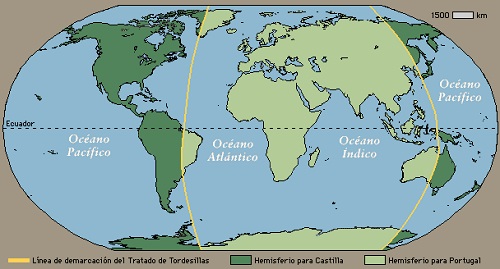 |
| Treaty of Tordesillas, 1494 |
|
|
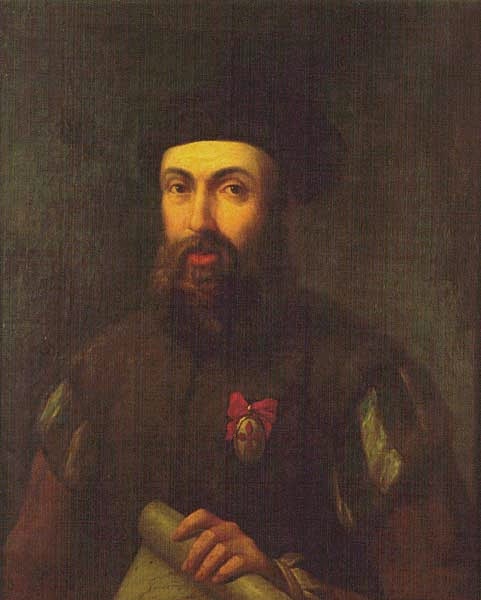 |
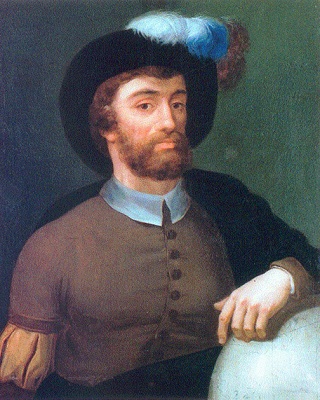 |
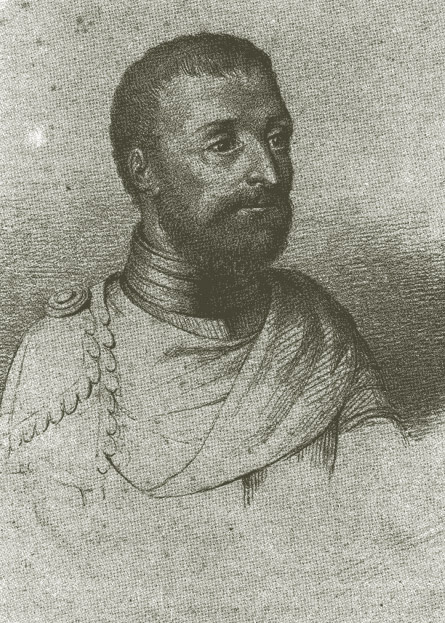 |
| Carlos V | Magellan | Elcano | Antonio Pigafetta |
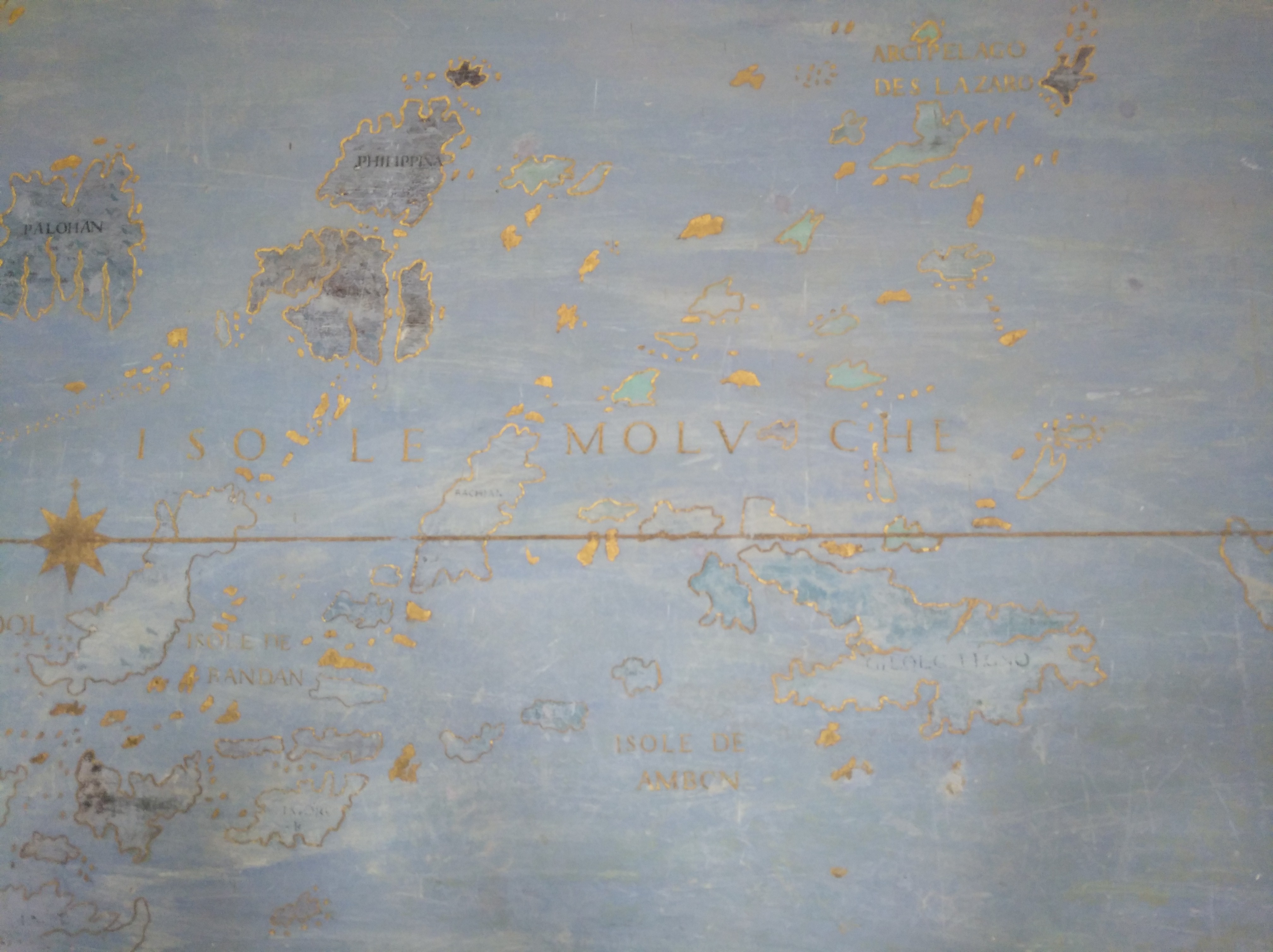 |
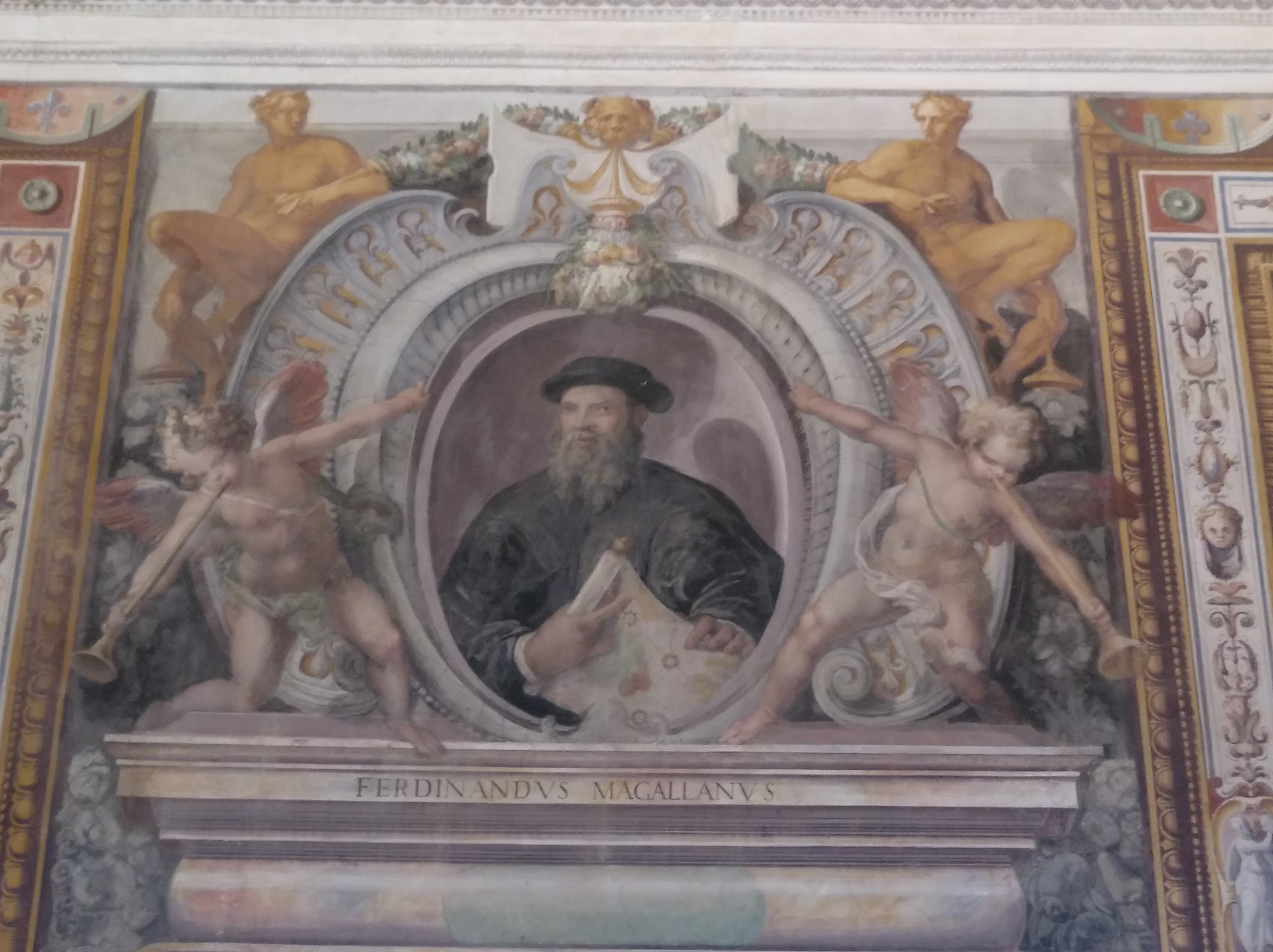 |
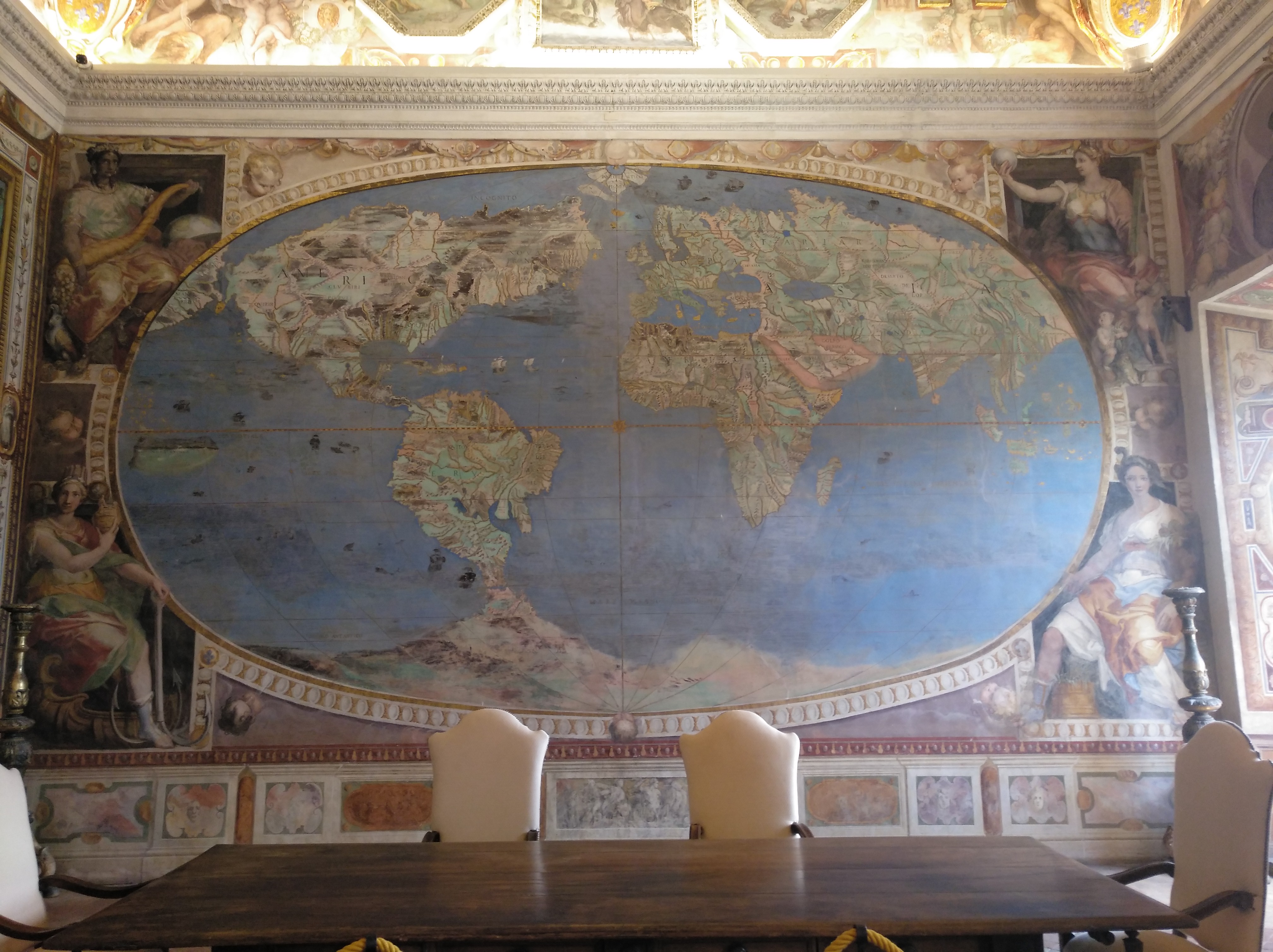 |
| Caprarola | Caprarola | Caprarola |
About Manuel Parodi
Manuel Parodi, historian and archaeologist, has been working on the History of Archaeology in Northern Morocco and Southern Spain since 2005, and has published several books and articles regarding this particular matter. He has also been working in several Archaeological and Historical Research Projects in Morocco since 2005, including the Archaeological Museum of Tetouan, its Archives and historical documents and records.
Manuel talked to us in November 2016 about The Spanish Indiana Jones in North Africa 1900-1948 and in October 2019 about Gadir/Cádiz.

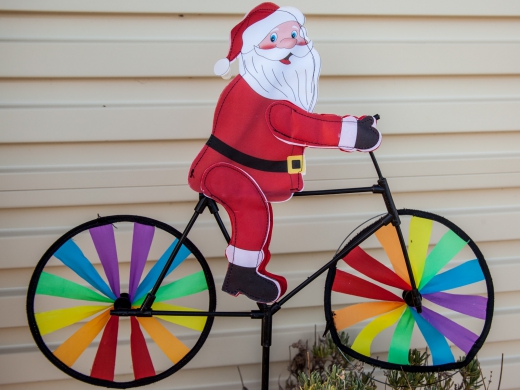 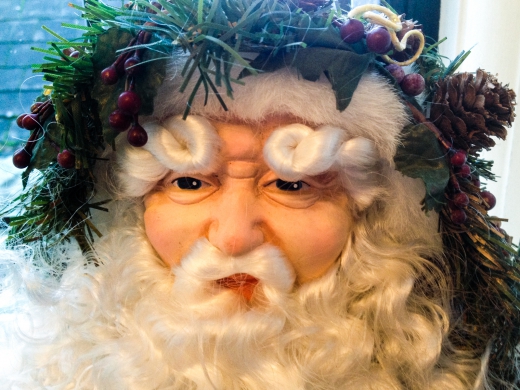 |
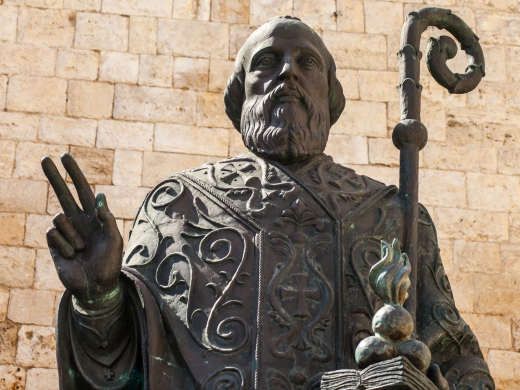
Nicholas was an important 4th century Greek bishop at the city of Myra in southern Anatolia. During a lifetime of beneficial deeds, he is said to have saved the lives of three virgins by offering gifts that secures their release. The sea traders of Myra elevated their kindly bishop into the patron saint of sailors, but the rise of Italian power in the region led to his body being stolen from his grave in Myra. The sailors of Bari and Venice hoped that his fame (and body parts) would protect their own busy ports and dangerous journeys.
The seafaring Dutch then adopt Nicholas as their maritime saint and take this idea across to their new territories in North America, where his image changes constantly until he is transformed from St Nicholas to Sinterklaas, finally becoming Santa Claus. This white bearded, red coated jovial gift-giver is brought back across the Atlantic to Britain, where his myth merges with the earlier pagan Father Christmas.
Recommended reading:
‘Santa – a Life’ by Jeremy Seal (Picador 2006)
‘The Basilica of St Nicholas’ by Gerado Cioffari (Levante 2009)
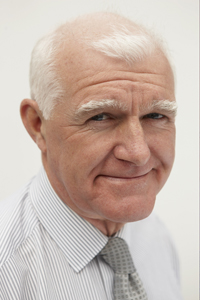 About Christopher Bradley
About Christopher Bradley
Expert in the history and culture of the Middle East and North Africa. As a professional tour guide and lecturer he has led groups throughout Africa, the Middle East and Asia. Has written extensively on Arabia and is the author of The Discovery Guide to Yemen, Insight Guide to the Silk Road and Berlitz Guides to The Red Sea; Cairo; Abu Dhabi, Oman and Nile Cruising.
As a photographer has pictures represented by four photographic libraries. As a film producer and cameraman he has made documentaries for the BBC, National Geographic TV and Channel 4.
Christopher is one of our favourite lecturers. Over the last 12 years he has talked to us about the Magi, the Queen of Sheba, Libya, the Treasures of the Silk Road and Roman mosaics.

For the series Downton Abbey, Andrew was commissioned to produce many jewels for the main characters, and this inspired him to create a talk based on Downton and the changing styles of the time portrayed.
Jewellery and Fashion are often seen as two entirely separate and distinct fields of design, but this is very far from the case.
In his talk Andrew guides you through the extraordinary periods and events between 1890 and 1929, where the great fashion houses collaborated with the finest of jewellers to produce works of art of outstanding quality and glittering opulence. Along with this he discusses the clients and patrons who commissioned the jewels and how they were worn with the sumptuous gowns.
 About Andrew Prince
About Andrew Prince
Andrew Prince has had a passion for the jewellery since he was a small child. In fact his enthusiasm can be traced back to the time when, at the age of three, he swallowed his one of his mother’s pearl earrings having found her jewel box hidden from him in a cupboard. The very first piece of jewellery he created was a ring made of copper wire pulled from the back of a television. He presented it to his grandmother (it turned her finger green and gave her a rash). He then created a necklace for his mother using beads taken off her wedding dress (she was not at all happy).
In 1980, when he was nine, Andrew's mother took him to the Princely Magnificence exhibition at the V&A, exhibiting Renaissance jewels dating from 1500 to 1630. It proved a revelation. Dazzled by the splendour and opulence of the jewels on show, Andrew decided then and there that creating jewellery was what he wanted to devote his life to. His passion for jewellery grew when, in 1984 on his first ever visit to Bond Street, Andrew viewed an exhibition by Castellani and Giulianoe at Wartski & Co’s. While there, he was allowed to handle beautiful 18th century gold boxes and magnificent imperial Russian pieces by Fabergé. In 1987, just before leaving school, he took time off to visit Geneva to view the astonishing Sotheby’s auction of the Duchess of Windsor's jewellery collection. Here, for the first time, he held pieces created by some of the world's greatest jewellers, fashione
In August of that year, two weeks after his 16th birthday, Andrew started work in London’s Bond Street, working for The Antiques Roadshow expert Ian Harris. Under his guidance, Andrew developed an appreciation for jewels that were valued for their quality of design and craftsmanship, rather than for how much the stones in the piece were worth. He then joined the renowned contemporary jeweller Elizabeth Gage and worked with her on the design and production side. Through her and her private collection, Andrew was able to see and handle rare and extraordinary stones with names such as Sphene, Andalusite, Spinel and Dioptase, many of which are far rarer than diamonds. Elizabeth Gage was to have an enormous influence on Andrew's sense of what was possible within the realm of jewellery design.
Andrew's taste for fine 'costume jewellery' can be traced back to an antique market, where he came across a late Victorian brooch set with what he initially thought were emeralds and diamonds. They were, in fact, crystal and green glass set in silver and gold. He realised that beautiful jewellery didn't require expensive stones, and that it was the elegance of the design and the quality of the workmanship that truly mattered. Private commissions then started to trickle in. The trickle turned into a flood, as celebrities such as Michael Jackson (a large crystal and pearl shoulder jewel) and Shirley Bassey (necklaces) were seen wearing Andrew's creations.
In 2002, the V&A commissioned a collection of jewels to accompany the resplendent Tiaras, Past and Present exhibition which became one of their most popular exhibits. The exposure gained by the show then led to Andrew's jewellery appearing in film.
In 2005, he was asked to make tiaras and jewellery for Mrs Henderson Presents starring Judy Dench. In 2009, pieces were commissioned for The Young Victoria starring Emily Blunt and Miranda Richardson. In 2012, he was chosen by the creators of Downton Abbey to supply a large collection of jewellery for the third series. The characters played by Maggie Smith, Shirley Maclaine, Elizabeth McGovern and Michelle Dockery were all adorned with elegant tiaras, combs, earrings and necklaces designed and created by Andrew Prince.

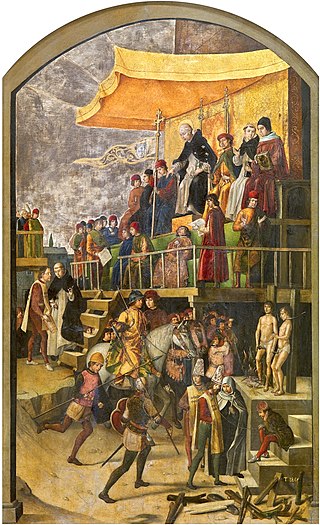 At a time when fake news is used to create new narratives about the world around us, it is fascinating to discover how political and religious propaganda spread through art in renaissance Europe.
At a time when fake news is used to create new narratives about the world around us, it is fascinating to discover how political and religious propaganda spread through art in renaissance Europe.
Paintings and drawings became a powerful tool to portray, from different perspectives, the work of one of the most controversial religious institutions in history: the Spanish Inquisition.
This lecture seeks to explore the complex and dynamic social and religious landscape of c.16th Spain and the role of the Spanish Inquisition in policing and enforcing law and order across the Spanish Empire.
It is also an attempt to retell the story of the Inquisition through art and new historical data.
About Daniel Muñoz
Daniel Muñoz is a Lecturer in History of Christianity at the Protestant Faculty of Theology of Madrid.
He was born in Málaga, grew up in Nerja, and studied in the UK and Spain. He was ordained an Anglican minister and served in the Oxford Diocese between 2001-2010.
Between 2010 and 2018 he was chaplain and programme director at the Los Olivos Anglican retreat centre in the Sierra Nevada national park.
His interests include the intersections between the arts and spirituality and religion.
Daniel spoke to us about Mystical Painting and Poetry in March 2015.

Marc Allum has been a ‘miscellaneous’ specialist on the BBC’s flagship Antiques Roadshow for 23 years. His personal insight and experience of the show and his knowledge of the world of art and antiques, makes him well-placed to talk about his 'behind the scenes' experience, production work and the many great discoveries over the past four decades. Together with his ‘anniversary’ book (Co-authored by Paul Atterbury) Marc explains the many facets of working with great objects, wonderful stories and excited owners. A must for all fans of BBC Antiques Roadshow.
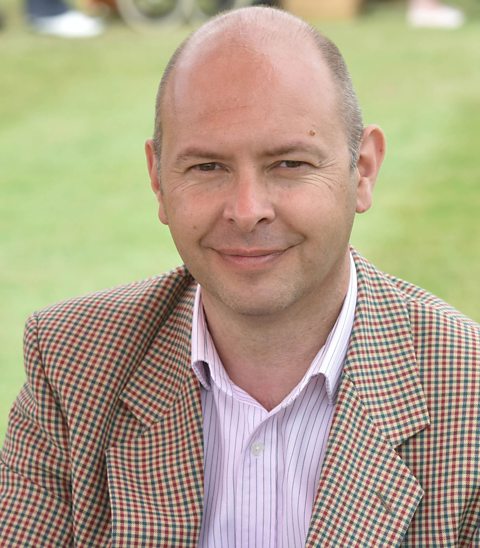 About Marc Allum
About Marc Allum
Marc Allum is a freelance art and antiques journalist, writer and broadcaster based in Wiltshire.He is shortly to begin his 23rd year as a specialist on the BBC Antiques Roadshow and has appeared on numerous television and radio programmes. Marc regularly writes for mainstream magazines and is an author, antiques consultant and lecturer. He also runs a fine art valuation and consultancy service. Marc has his own unique style with interests ranging from pre-history to modern design and is a self-confessed collectaholic. He has a passion and reputation for divining the unusual through ‘a desire to connect with history through the interpretation and pursuit of objects and their origins’. Marc has lectured widely for many years to a number of different organisations in both the public and charity sector, including travel companies, The National Trust, The WI and many literary festivals including Cheltenham, Bath, Wells and Petworth.

This will be an illustrated talk discussing many of the problems which confront the art business as it tries to protect itself from criminality.
About John Myatt
John Myatt was arrested and imprisoned in 1999 - described by Scotland Yard as the greatest art fraud of the 20th Century.
He has lectured on authenticity and criminality at Sotheby’s Institute Summer School, San Diego Museum, the Wallace Collection, at both Oxford and Cambridge Universities, as well as presenting 5 years of TV programmes on Sky Arts.

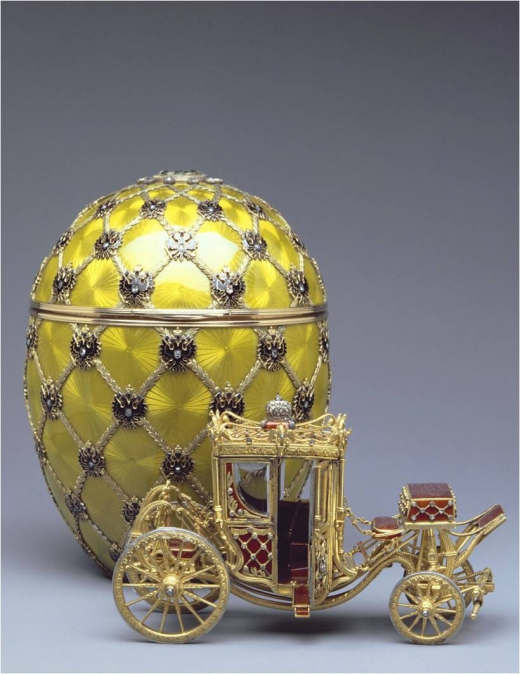
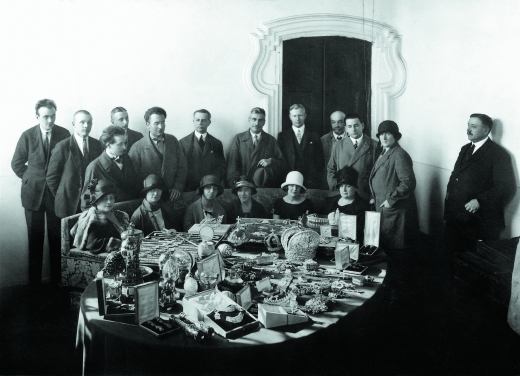
Between 1885 and 1916, Carl Fabergé made fifty jewelled eggs – Easter presents from Russia’s last two emperors to their wives. They have become the most famous surviving symbols of the Romanov Empire: both supreme examples of the jeweller’s art and the vulgar playthings of a decadent court.
Given almost total artistic freedom, Fabergé and his designers had to conform to only three rules: that each year’s Easter present should be egg-shaped, that it should contain some surprise to amuse or delight its recipient, and that it should be different from any predecessor. The result was a series of creations demonstrating ingenuity and creativity for which there are few parallels in any other field. Their styles range from traditional Russian to Art Nouveau, and their materials from carved hardstone to exquisite enamelled gold. Their maker’s relentless search for novelty also means that they provide a fabulously quirky illustrated history of the decline of the Romanovs. Toby Faber wrote Fabergé’s Eggs: One Man’s Masterpieces and the End of an Empire, described by P.D. James as a ‘fascinating story which combines unique decorative art, contemporary culture, history and the murder of the Romanovs with the excitement of a crime novel’. The lecture is illustrated with pictures of the Romanovs and their palaces, and, of course, with photographs of the eggs themselves.
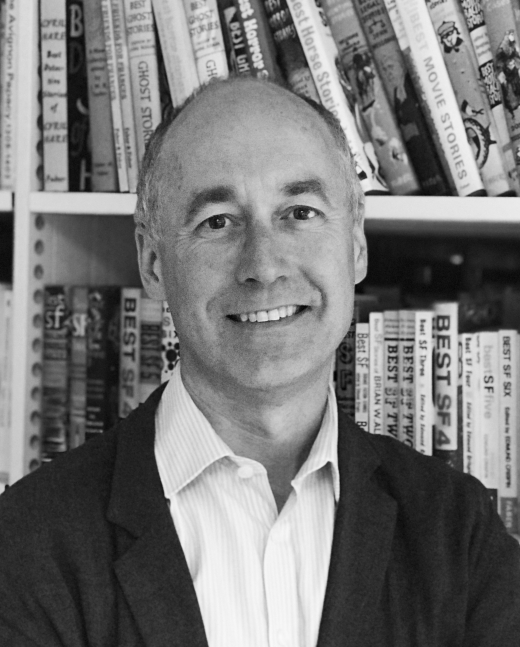 About Toby Faber
About Toby Faber
Toby is an experienced lecturer and public speaker who has been accredited by The Arts Society since 2012. His career began with Natural Sciences at Cambridge and has been through investment banking, management consulting and five years as managing director of the publishing company founded by his grandfather, Faber and Faber, where he remains on the board. He is also non-executive Chairman of its sister company, Faber Music and a director of Liverpool University Press.
Toby has written three narrative histories: Stradivarius – Five Violins, One Cello and a Genius; Faberge’s Eggs; and Faber & Faber – The Untold Story, as well as a novel, Close to the Edge. Of these, only the obvious one is published by the family firm.
Toby talked to us in May 2017 about the company Faber and Faber.
Image of the egg courtesy of The Forbes Collection, New York. Photographed by Joseph Coscia, Jr. Copyright © All rights reserved.

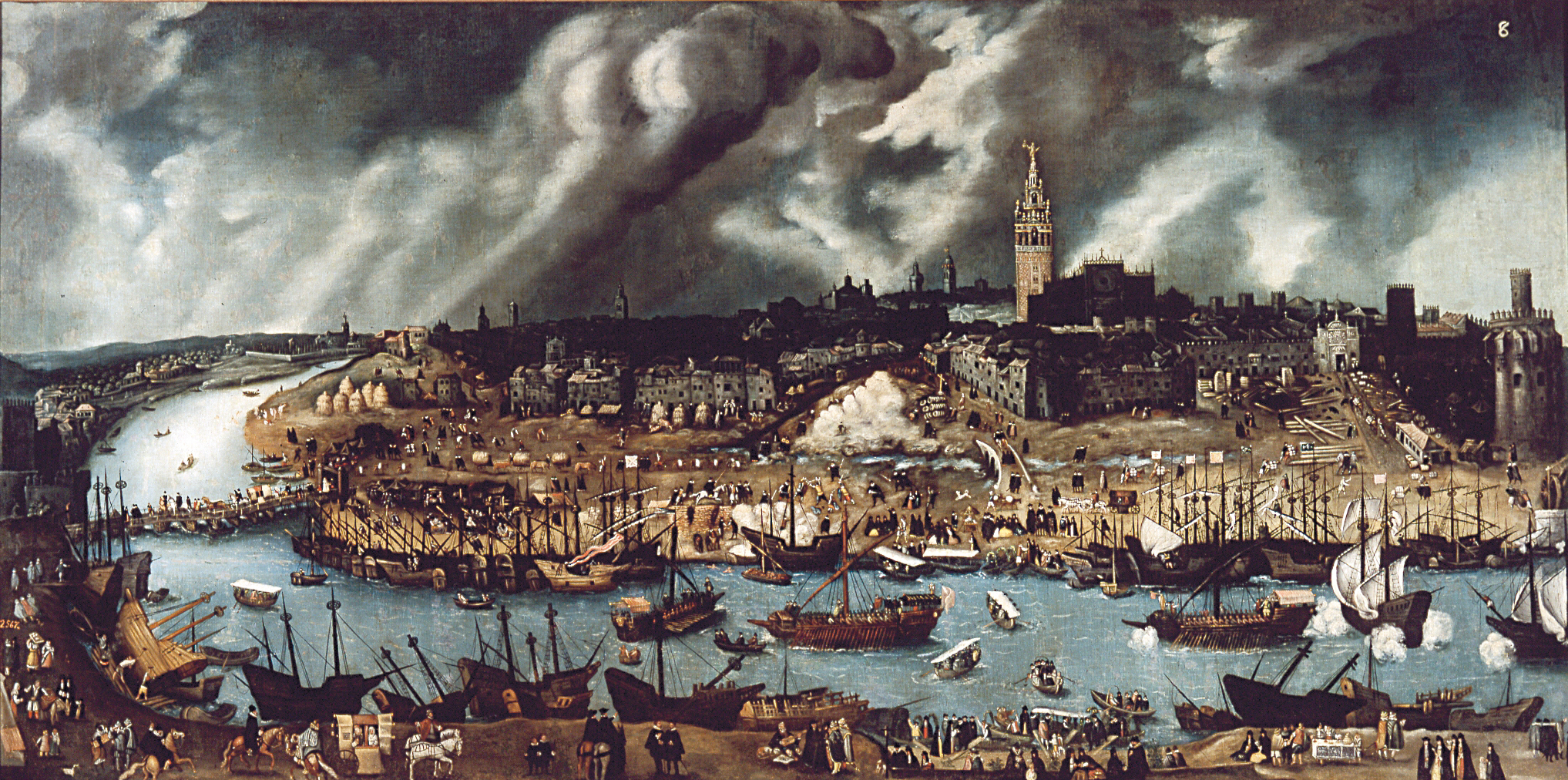 Seville arose as a blended Moorish Christian city to become Spain’s colonial capital in the sixteenth century. It became a great babylon out of the gold and silver of the new world, all of it brought here. Spain’s great success, its excesses and decline, the complexities and contradictions of its culture are better expressed here than anywhere else. From the cauldron of its summer to the delicious cool of its patios, Seville is Spain intensified.
Seville arose as a blended Moorish Christian city to become Spain’s colonial capital in the sixteenth century. It became a great babylon out of the gold and silver of the new world, all of it brought here. Spain’s great success, its excesses and decline, the complexities and contradictions of its culture are better expressed here than anywhere else. From the cauldron of its summer to the delicious cool of its patios, Seville is Spain intensified.
About Rafael Anderson
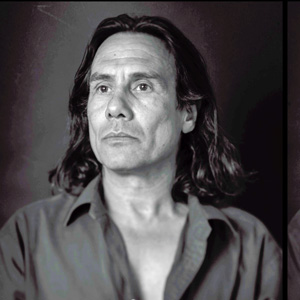 Rafael Anderson is an architect, writer and historian. He has written and lectured widely on Spanish history, architecture, and the Islamic legacy of al-Andalus. Rafael runs a multidisciplinary architectural practice in the province of Granada entitled Future Ancient Technologies. It combines craftsmen, specialists and other professionals to offer broad skills in all aspects of the construction industry from development to historic restoration and domestic construction.
Rafael Anderson is an architect, writer and historian. He has written and lectured widely on Spanish history, architecture, and the Islamic legacy of al-Andalus. Rafael runs a multidisciplinary architectural practice in the province of Granada entitled Future Ancient Technologies. It combines craftsmen, specialists and other professionals to offer broad skills in all aspects of the construction industry from development to historic restoration and domestic construction.
He teaches architecture and sustainability at the Granada visiting school of London’s Architectural Association, a course which combines the knowledge of ancient and future technologies to explore new possibilities for the age we are entering.
Prior to moving to Spain Rafael worked in London, Hong Kong, Scandanavia and India, he has been premiated in numerous international architectural competitions, widely published and twice exhibited at the Royal Academy in London.
Rafael has worked as a guide lecturer for several years leading tours of the cities of Andalusia including Seville, with the UK based company Specialist Tours. He also guides in the Albayzin with the writer Chris Stewart, and other cultural and historical groups such
as the Arts Society.
Rafael has talked to us several times in the past few years, the last time being about Copenhagen in January 2020.

,_akvarell_av_Anders_Zorn.jpg)
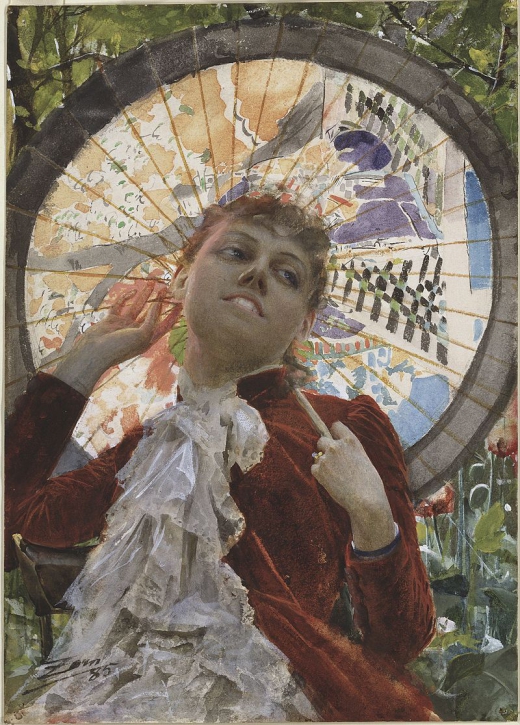
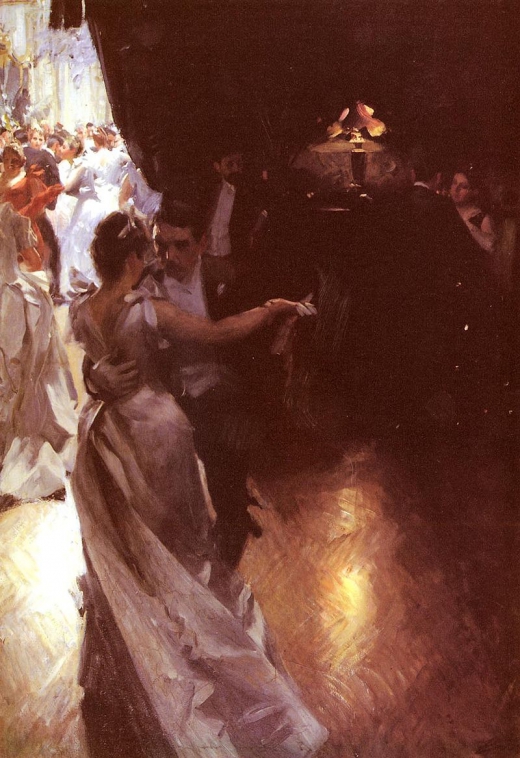
.jpg) Of all the artists to come out of Sweden, only Anders Zorn achieved enduring international acclaim. His talent was evident from early childhood, and it was prodigious. Equally at home with watercolour and oil, he was a master of both landscape and portraiture, a characteristic he shared with his contemporary rival and friend, John Singer Sargent. Like him, he was the darling of the belle époque, and he went on to make his fortune painting America’s great and good, not least three American presidents. Stylistically similar, to Sargent, he also had the knack of conveying character with a few broad brushstrokes. This lecture examines some of his most iconic works, from his dazzlingly competent watercolours of his native Sweden to his gloriously confident portraits of American high society figures such as Isabella Stewart Gardner.
Of all the artists to come out of Sweden, only Anders Zorn achieved enduring international acclaim. His talent was evident from early childhood, and it was prodigious. Equally at home with watercolour and oil, he was a master of both landscape and portraiture, a characteristic he shared with his contemporary rival and friend, John Singer Sargent. Like him, he was the darling of the belle époque, and he went on to make his fortune painting America’s great and good, not least three American presidents. Stylistically similar, to Sargent, he also had the knack of conveying character with a few broad brushstrokes. This lecture examines some of his most iconic works, from his dazzlingly competent watercolours of his native Sweden to his gloriously confident portraits of American high society figures such as Isabella Stewart Gardner.

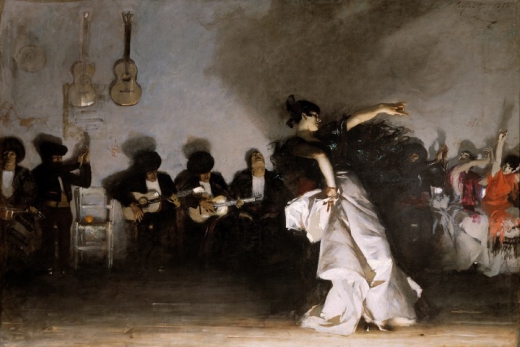
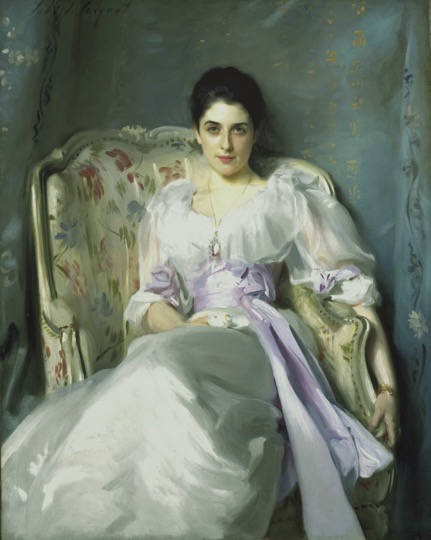
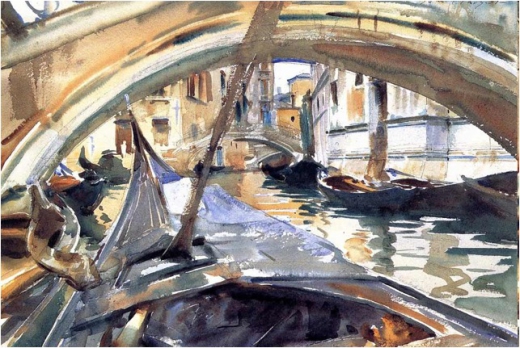
Few artists can match the achievements of this American artist who trained in Paris and spent much of his life depicting the world of the belle époque, from leisurely days on the Grand canal, to the society women of New York. His style is uniquely his own, impressionistic and realistic at once, flamboyant and spontaneous with a bravura and exactitude reminiscent of Velázquez and Van Dyck. Few can fail to be inspired by his exquisite handling of colour.
About Brian Healey
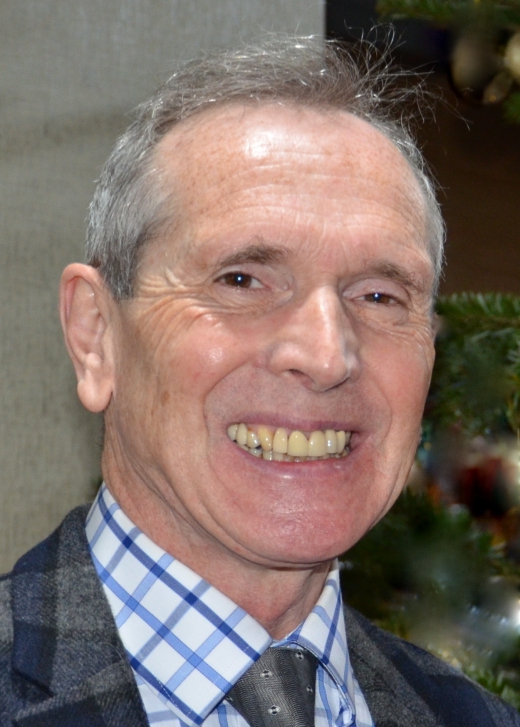 A senior modern languages teacher in an independent grammar school for many years, I have also enjoyed a successful parallel career since the 1980’s as a professional artist and interior designer. Since 2006 I have been regularly appointed to a number of prestigious ocean and river cruise lines, either as resident artist, guest lecturer on art history or as destination speaker for more than forty countries. Most recently this work has successfully extended to art guiding through important towns and museums in France, Belgium, Holland and Spain.
A senior modern languages teacher in an independent grammar school for many years, I have also enjoyed a successful parallel career since the 1980’s as a professional artist and interior designer. Since 2006 I have been regularly appointed to a number of prestigious ocean and river cruise lines, either as resident artist, guest lecturer on art history or as destination speaker for more than forty countries. Most recently this work has successfully extended to art guiding through important towns and museums in France, Belgium, Holland and Spain.
In March 2017 Brian introduced us to Midsummer Magic -An introduction to some of the glorious paintings of the Nordic Impressionists of the late 19th Century, as well as telling us about Vincent van Gogh's time in Arles. In March 2020 he talked to us about Monet's garden.

Linda Decker will talk to us about her posting as an expat to Jerusalem. After living for eight wonderful years in Jordan, over ten years in the Arab world and two decades in Muslim countries in the Far and Middle East, in 2010 Linda and her family were relocated from Amman in Jordan to Jerusalem, a journey of only 80 kilometres.
This family was used to living overseas but, for the first time in two decades of being a global nomad, Linda felt alien in her new host country.
She was shocked by the level of security and the difficulties of travelling in and out of the West Bank through the barrier wall between Israel and Palestine.
Linda had the opportunity to meet and get to know Israelis and Arabs, Jerusalemites and Ramallahns, and to enjoy their food, celebrations, culture and ways of life.
She learnt about all sorts of Jews, the holidays, the matchmakers and the kaleidoscope of people, nationalities and beliefs, all of which make up modern-day Israel.
The family explored both Israel and the Palestinian Occupied Territories, making friends, learning more about the people and their beliefs as they travelled around the region and engaged with local communities.
At a time when the Israelis and Palestinians live in parallel, with virtually no opportunity to experience how the other half lives, it’s worth taking time to discover what day-to-day life is like for ordinary Israelis and Palestinians, and exploring the nation of Israel beyond the political rhetoric.
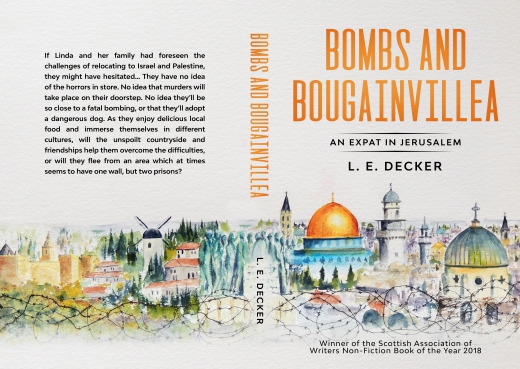 Linda’s award winning travel memoir is a personal account of life lived and observed both in Israel and in Palestine. It is anecdotal and not an academic or historical account. Linda will share with us how her memoir came about, some stories highlighting some of the challenges of living in the region and will read extracts from her book.
Linda’s award winning travel memoir is a personal account of life lived and observed both in Israel and in Palestine. It is anecdotal and not an academic or historical account. Linda will share with us how her memoir came about, some stories highlighting some of the challenges of living in the region and will read extracts from her book.
About Linda Decker
 Linda Decker is an award-winning travel writer whose memoir, Bombs and Bougainvillea, was awarded first place for a non-fiction book in 2018 by the Scottish Association of Writers, and became an Amazon Best seller on release.
Linda Decker is an award-winning travel writer whose memoir, Bombs and Bougainvillea, was awarded first place for a non-fiction book in 2018 by the Scottish Association of Writers, and became an Amazon Best seller on release.
Linda enjoyed a career in both corporate and criminal law in the UK before moving overseas with her family. Living in Jordan she was a writer for a general interest magazine circulated widely in the Middle East and gained a British Diploma in Journalism by distance learning while living in Jerusalem.
She has just finished a coffee table book, Impressions of Andalucía, which narrates a journey around Andalucia in paintings and prose. The book showcases 70 new watercolour paintings by the British artist Peter Lawrence and it will be published in 2021, with contributions by bestselling authors Chris Stewart ( Famous for his trilogy which began with Driving Over Lemons), and Victoria Hislop, whose bestselling novel The Return was set in Granada.
Linda is now focusing on her legal crime fiction series, set in her native Glasgow. The first novel, Not Proven, was commended by the Scottish Association of Writers in 2019.
When she is not writing Linda enjoys walking, yoga, sewing and travelling. She also loves food, cooking and eating out with family and friends.

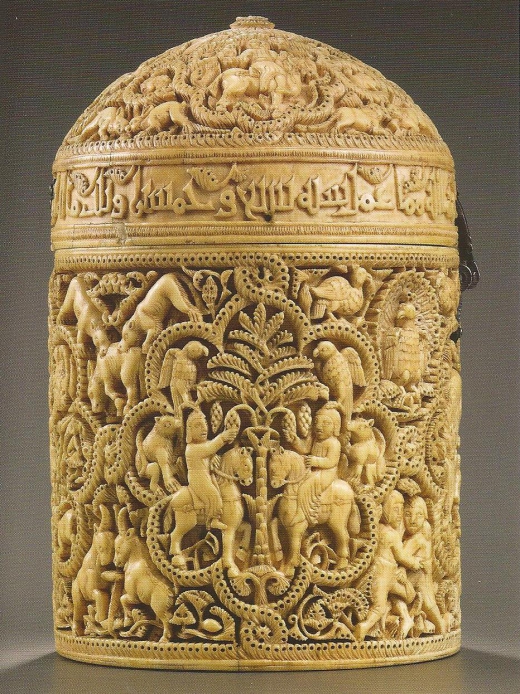
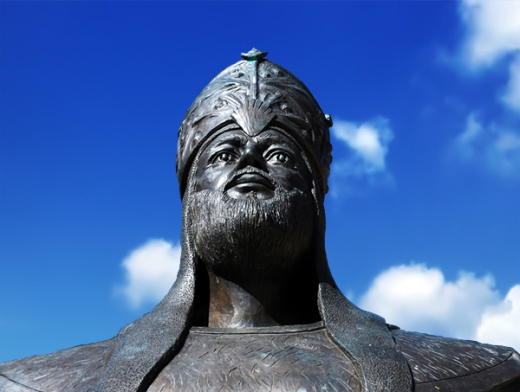
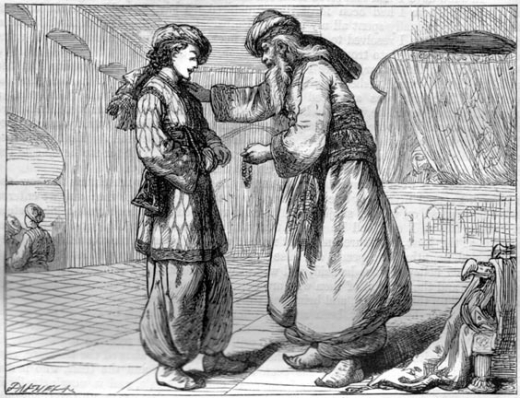 Sometimes a single object can tell a very complex story about the times in which it was created.
Sometimes a single object can tell a very complex story about the times in which it was created.
The ivory workshops licensed by the Caliphal court in tenth-century Córdoba were renowned for the exquisite beauty of the carved ivory caskets and pyxides that they created, as gifts given between members of the court and to visiting ambassadors. Understanding the iconographic programmes carved on these objects is a fascinating study in itself.
But the al-Mughira pyxis, now in the permanent collection of the Louvre, can be interpreted either according to the familiar iconography – or re-interpreted to expose a complex story of intrigue, sex and murder, during a succession crisis in Cordoba, that almost beggars belief.
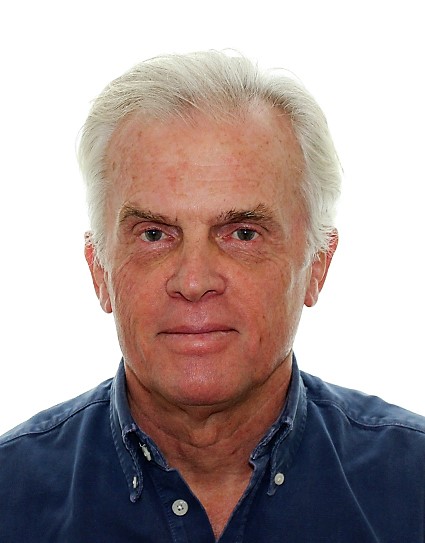 About Ian Cockburn
About Ian Cockburn
Art historian with a BA (Birkbeck College) in art history and an MA (Courtauld Institute of Art) in medieval Spanish art history. Specialist in the nearly 800 years of Moorish occupation and Christian reconquest of medieval Iberia.
Founder and director of Art & Culture Andalucia, specialising in guided cultural tours in Spain, plus lecturing in London at institutions such as the V&A, SOAS, Christies Education, and the London Art History Society.
Formerly a Chartered Accountant and senior manager in multi-national IT companies, with extensive public-speaking experience.



